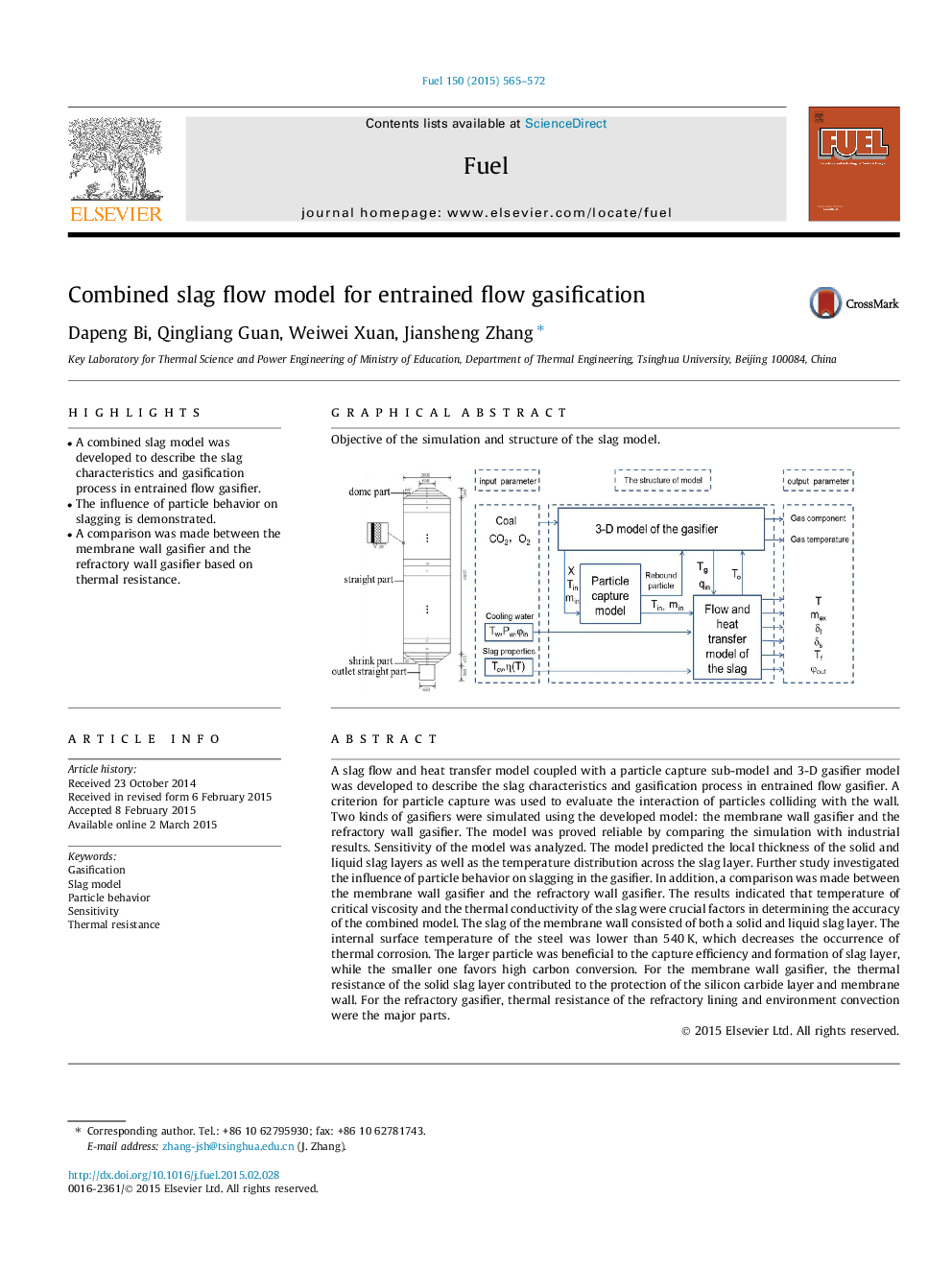| Article ID | Journal | Published Year | Pages | File Type |
|---|---|---|---|---|
| 205743 | Fuel | 2015 | 8 Pages |
•A combined slag model was developed to describe the slag characteristics and gasification process in entrained flow gasifier.•The influence of particle behavior on slagging is demonstrated.•A comparison was made between the membrane wall gasifier and the refractory wall gasifier based on thermal resistance.
A slag flow and heat transfer model coupled with a particle capture sub-model and 3-D gasifier model was developed to describe the slag characteristics and gasification process in entrained flow gasifier. A criterion for particle capture was used to evaluate the interaction of particles colliding with the wall. Two kinds of gasifiers were simulated using the developed model: the membrane wall gasifier and the refractory wall gasifier. The model was proved reliable by comparing the simulation with industrial results. Sensitivity of the model was analyzed. The model predicted the local thickness of the solid and liquid slag layers as well as the temperature distribution across the slag layer. Further study investigated the influence of particle behavior on slagging in the gasifier. In addition, a comparison was made between the membrane wall gasifier and the refractory wall gasifier. The results indicated that temperature of critical viscosity and the thermal conductivity of the slag were crucial factors in determining the accuracy of the combined model. The slag of the membrane wall consisted of both a solid and liquid slag layer. The internal surface temperature of the steel was lower than 540 K, which decreases the occurrence of thermal corrosion. The larger particle was beneficial to the capture efficiency and formation of slag layer, while the smaller one favors high carbon conversion. For the membrane wall gasifier, the thermal resistance of the solid slag layer contributed to the protection of the silicon carbide layer and membrane wall. For the refractory gasifier, thermal resistance of the refractory lining and environment convection were the major parts.
Graphical abstractObjective of the simulation and structure of the slag model.Figure optionsDownload full-size imageDownload as PowerPoint slide
